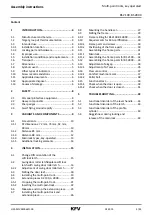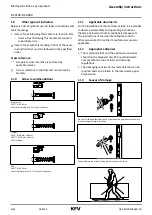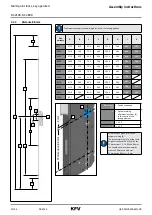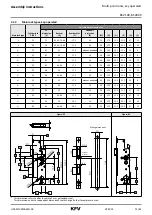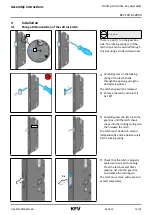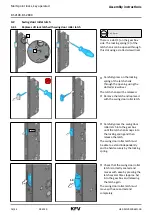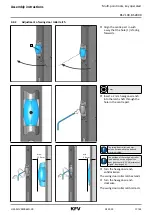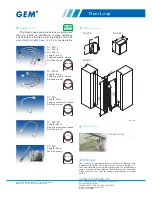
02.2019
4/44
H39.MFVRS006EN-00
Multi-point locks, key operated
Assembly instructions
BS 2100, BS 2800
1
Introduction
Please read these instructions carefully before you
begin the assembly work. Follow the instructions in
Chapter 2 “Safety”, in order to prevent personal injury
or functional disorders.
These instructions are an integral part of the multi-
point lock and must be accessible to the specialist
personnel at all times.
1.1
Manufacturer and Service
KFV Karl Fliether GmbH & Co. KG
A company of the SIEGENIA GROUP
Siemensstraße 10
42551 Velbert
Tel.: +49 2051 278-0
Fax: +49 2051 278-167
E-Mail: info@kfv.de
Please contact your retail partner in case of complaints
or service requirement.
1.2
Target group of this documentation
This documentation is intended for use by specialists
only. All work described in this document is to be
performed only by experienced professionals with
training and practice in the assembly, as well as the
commissioning and maintenance of multi-point locks.
1.3
Intended use
1.3.1
Installation location
•
The multi-point lock is suitable for installation in
single-sash and double-sash doors in permanent
buildings.
•
The multi-point lock may only be installed in doors
that have been fitted in a technically sound manner.
•
The door design must permit use of the multi-point
lock.
1.3.2
Locking part and hardware
•
Use only KFV frame parts.
1.4
Improper use
•
The multi-point lock must not be used for escape
doors.
•
The multi-point lock is not designed to
accommodate changes to its shape or sealing which
arise as a result of differences in temperature or
changes to the building beyond the adjustment path
of the Q adjustment.
•
The multi-point lock must not be used in doors
for wet rooms or rooms in which the air contains
aggressive or corrosive components.
•
Foreign objects and/or materials which impede or
prevent proper use must not be placed within the
opening range, the locking system or the frame
parts.
•
Do not interfere with and/or make any
modifications to the multi-point lock.
•
Locking elements must not be misused to hold the
door open.
•
Movable or adjustable locking elements
(e.g. deadbolt, latch) must not be painted over.
1.5
Installation conditions and requirements
Local building laws and regulations must be observed
before and during door installation in addition to the
following requirements and conditions:
•
Before installing the multi-point lock, check the
dimensional accuracy of the door and the door
frame. The multi-point lock must not be installed
if the door and/or the frame is warped and/or
damaged.
•
Surface treatment of the door and door frame must
take place before the multi-point lock is installed.
Subsequent surface treatment can reduce the
functional capacity of the multi-point lock.
•
Observe the specified positions and sizes for all
milling and drilling dimensions within the defined
tolerances. Observe the horizontal and vertical
adjustment accurately.
•
Remove any splinters from routed pockets after
milling.
•
Do not overtighten the screws or insert them at an
angle.
•
Once the multi-point lock is installed, do not
perform mechanical work on the door (such as
drilling or milling).
•
Do not drill into or through the main lock under any
circumstances.
•
Install hardware components and cylinder flush.
•
Adhere to airgap (interval between faceplate and
frame parts): The multi-point lock functions safely
with an airgap between 3.5 mm +/- 1.5 mm. Beyond
this, the fabricator must ensure that the airgap
is large enough to guarantee the freedom from
constraint of the door.
•
Use only acid-free neutral-cure sealants to prevent
corrosion of components and/or the door.



